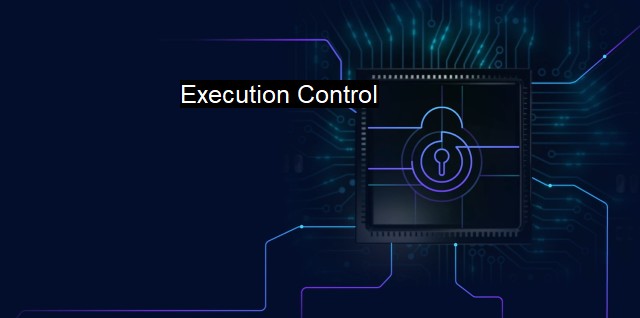What is Execution Control?
Understanding Execution Control: The Key to Advanced Cybersecurity and Malware Prevention
Execution Control refers to the process that oversees or controls how and when different applications or programs run on a computer system. This is a mechanism for managing and coordinating tasks within the computer system to prevent malicious activities from occurring or limit their impact when they do occur. While it can be generally categorized into two areas of computer management—permission control and flow control—Execution Control is broader than this and extends to various aspects of computer operations.In the world of information technology, Execution Control holds a significant importance. With malware and cyber attacks becoming increasingly sophisticated, the ability to manage, coordinate and control tasks within a system becomes all the more crucial for ensuring the integrity and security of the system. Execution Control aims to control the execution of tasks, alleviate the risks that they might entail, guarantee the appropriate level of system performance, and provide security and protection against external threats.
Execution Control intersects significantly with antivirus software development. As these programs are built to detect, remove, and ward off potential viruses, Execution Control forms its basic defense mechanism. Antivirus software can control the execution of tasks within the computer system, allowing it to prevent potential threats from executing harmful code.
Antivirus software uses different methods for Execution Control. One of these methods incorporates the idea of permissions by controlling which users or processes can execute which tasks. Other methods involve behaviour blocking and heuristics algorithms that are designed to analyze the behavior of programs, identify suspicious activities, and then either block their execution outright or flag them for further analysis.
The concept of Execution Control is often framed in the context of two main approaches: controlling the execution of external, possibly harmful, tasks, and controlling the execution of well-known, acceptable tasks. The former approach tackles previously unidentified threats that may cause harm to the system, while the latter focuses more on preventing well-known threats from executing unwanted or suspicious activities.
From a broader perspective, the ultimate goal of Execution Control in cybersecurity is to create a system that only allows trusted applications to run, effectively shutting out any other software that hasn't been specifically cleared for execution. The resulting system ontology is often referred as a 'whitelisting approach’ to execution control which is generally considered to be much stronger against unknown threats when compared to traditional antivirus solutions.
Execution Control augments the traditional defense mechanisms by reducing the number of potential vulnerabilities that can be exploited by malicious attackers. By controlling the execution of software, it limits the foothold an attacker can gain and helps maintain the overall security and integrity of the system. With its growing importance in maintaining the system's security, Execution Control is becoming a dominant strategy or precautionary measure in the field of cybersecurity and antivirus.
Shifts in both technology and cyber threats are leading toward more dynamic models of Execution Control that can change over time to match the risks posed by evolving threats. Many solutions are being developed that break apart software into granular permissions, increasing their manageability and providing an additional layer to Execution Control.
Execution Control has emerged as an important area of cybersecurity designed to manage, mitigate, and repair potentially harmful applications. It grants immense power over a computer system’s activities and implementations to ensure the system's security and protection. With advances in artificial intelligence and machine learning, solutions involving Execution Control will likely continue to become more potent and better equipped to handle modern cybersecurity threats.

Execution Control FAQs
What is execution control in cybersecurity and antivirus?
Execution control is a security feature that prevents the execution of harmful or malicious programs on a system. It limits the ability of unauthorized programs to execute code and helps protect against various types of malicious attacks.What are the different types of execution control?
There are several types of execution control mechanisms, such as data execution prevention (DEP), address space layout randomization (ASLR), and code signing. These mechanisms use different techniques to prevent the execution of unauthorized code or to limit the impact of a successful attack.How does execution control help prevent malware infections?
Execution control is an essential tool for preventing malware infections. It helps prevent the execution of malicious code by blocking certain requests or actions that could lead to the installation or execution of malware. For example, a firewall may block traffic from known malicious IP addresses, or an antivirus program may use signature-based detection to identify and block known malware threats.Can execution control affect the performance of a system?
Execution control mechanisms can sometimes impact system performance, particularly if they rely on intensive computations or require additional resources to implement. However, most execution control mechanisms are designed to be lightweight and have minimal impact on system performance. Careful configuration and testing can help ensure that execution control mechanisms do not negatively affect system performance or usability.| | A | | | B | | | C | | | D | | | E | | | F | | | G | | | H | | | I | | | J | | | K | | | L | | | M | |
| | N | | | O | | | P | | | Q | | | R | | | S | | | T | | | U | | | V | | | W | | | X | | | Y | | | Z | |
| | 1 | | | 2 | | | 3 | | | 4 | | | 7 | | | 8 | | |||||||